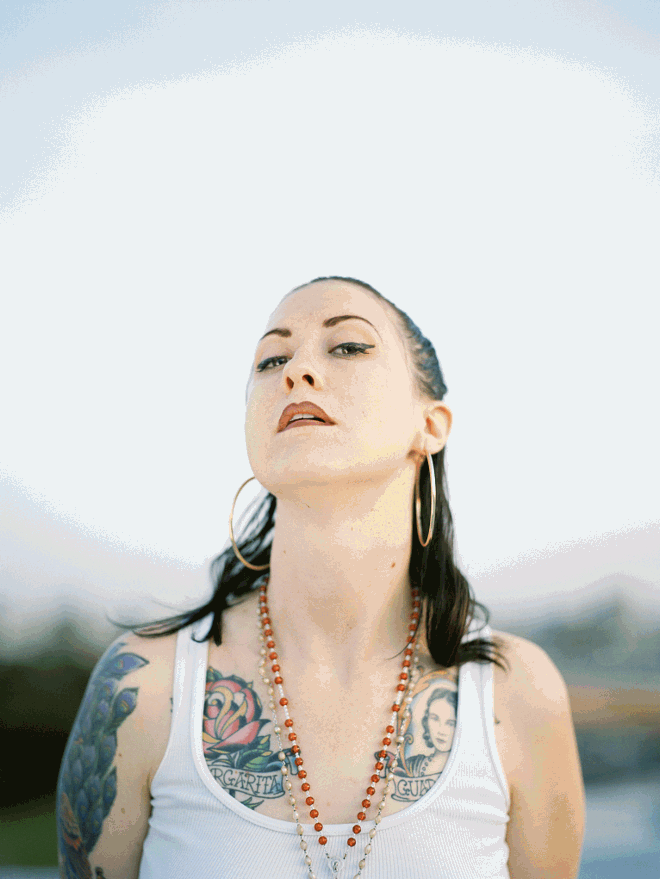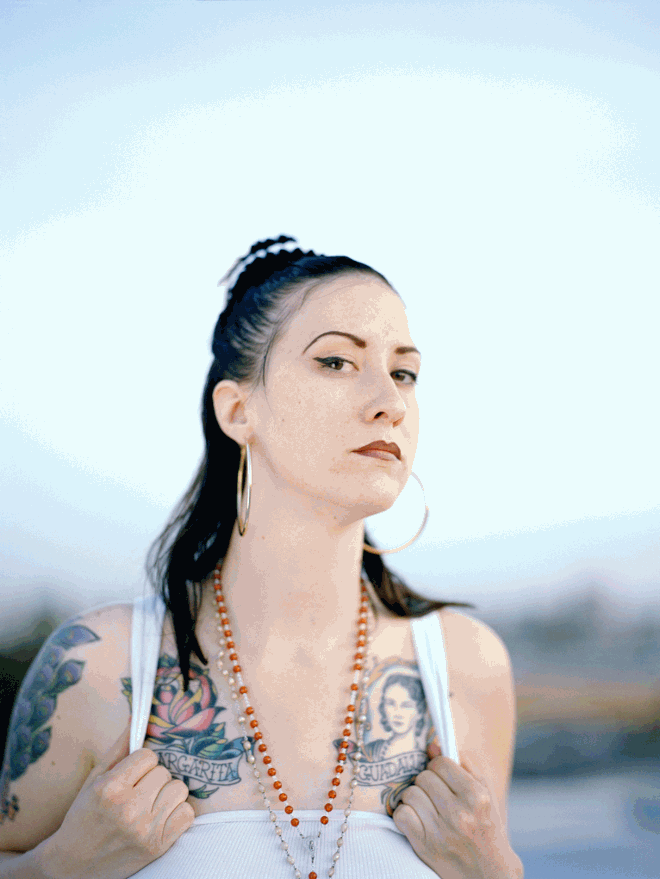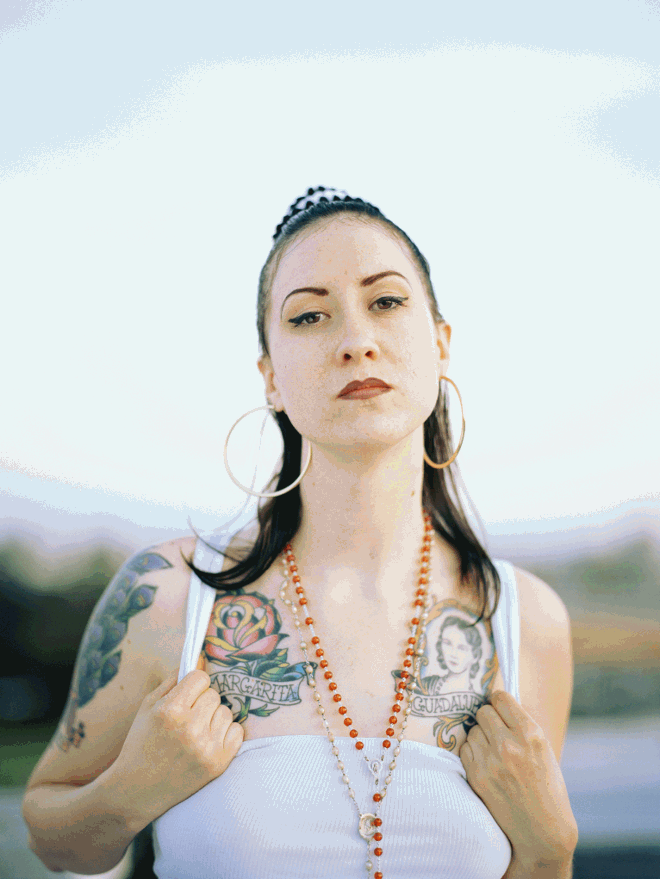


Ace Lehner, 100% (Triptych), archival inkjet, 30“ × 40” (in collaboration with Libby Paloma), 2009.
In the past two years, the Editorial Board of Visual Studies has endeavoured to rethink the social function of visually-based research in the twenty-first century. The visual has emerged as central to contemporary life, brought about by new technologies and an increasingly rapacious techno-capitalist landscape. In the past decade, there has been a rise in nationalist politics, fascist rhetoric, xenophobia and increasing ethnic and racial division. In the U.S. and abroad, efforts to roll back the rights of women, undocumented immigrants, and LGBTQ communities are increasing rapidly, as are assaults on voting rights, and the central principles of democracy. Extremist violence and the extrajudicial killing of unarmed citizens by the police are only increasing – while education on the primary levels is under attack, books are being banned, and histories sanitised and rewritten. In short, these are troubling times. Visually-based research can play a vital part in resisting the ever-increasing threat of authoritarianism, economic rapacity, division and the extension of empire, by asserting itself as a critical voice in opposition to these phenomena.
The intentions that drive much visually-based research have often been called into question, and rightly so because many philanthropic forms of socially-committed labour have led to unintended consequences like increased exploitation and stereotyping. The imaging of bodies, especially the minoritised and othered, have problematic associations and ramifications – and representation has a tendency to render bodies manageable and knowable, so often reducing them (through the act of looking) to legible reductions. As Alexis Boylan argues, ‘we are fed ideas about bodies that make them visually generic.’ These same bodies, Boylan opines, ‘are resistant and unruly, constantly defying the authority of the gaze. At every turn, we see bodies that disobey, that deny categorisation and refuse the disciplining work of being stared at’ (Boylan Citation2020, 95). Boylan rightly questions the legacy of the visual, while pondering if we are seeing only the proliferation and normalisation of stereotypes, as opposed to actual people. To that point, there is always a need to question whether popular forms of socially-committed visual research are working toward structural change – or merely reveling in and fetishising stereotypes about global suffering. Scholars such as Homi Bhabha have ruminated over the role of stereotype and fetishism in oppressive cultural contexts (Bhabha Citation1994, 115). Bhabha’s critical investigation compellingly argues that discrimination demands and therefore sustains itself by a proliferation of representations of difference. In fact, in discriminatory contexts, the visualisation of otherness is normalised and grounded into the public consciousness – even if presented as a rebuke to the fraught conditions that produced it.
The Slovenian philosopher Slavoj Žižek has been critical of what he perceives as a disingenuous tendency within liberalism towards a cosmetic engagement with tolerance, as opposed to an earnest commitment to eradicating injustice. ‘The Culturalization of Politics’ is the term Žižek advances to describe a form of cosmetic liberalism, or a cultural positionality, that expresses sympathy, yet is disinterested in fostering actual structural and emancipatory change (Žižek Citation2008, 660). Lisa Cartwright and Marita Sturken have also explored how the act of looking is sutured to notions of power and therefore, we must question the ethical motivations behind the gaze that looks so invasively at forms of difference:
The gaze, whether institutional or individual, thus helps to establish relationships pf power. The act of looking is commonly regarded as awarding more power to the person who is looking than the person who is the object of the look. The tradition of institutional photography, in which prisoners, mental patients, and people of various types were photographed and catalogued, can be related to the traditions of visual anthropology and travel photography, as well as to the tradition of painting peoples of so-called exotic locales. All function to varying degrees to represent codes of dominance and subjugation, difference and otherness. (Cartwright and Sturken Citation2009, 111)
Writer Noreen Nasir, in her Associated Press article entitled ‘Images of Brutality Against Black People Spur Racial Trauma’ explores the psychological impact of violent images on black viewers. The tendency and increasing prevalence of anti-black violence displayed in mass media has become a ubiquitous and normalised practice, yet the effects of these representations on minoritised viewers is just now being seriously considered. Nasir explains:
[Racial trauma, or] the distress experienced because of the accumulation of racial discrimination, racial violence or institutional racism … While it can affect anyone who faces repeated prejudice, in this moment, its impact on Black people is drawing particular attention. The unfortunate irony is that the very tool that may be helping to make more people aware of the racism and violence that Black and other people of color face is also helping to fuel their trauma.
… Symptoms of racial trauma can include anxiety and depression and be similar to those of post-traumatic stress disorder. The triggering event could be a shouted slur on the street or poor treatment because of one’s race or creed. The profusion on social media of graphic images of harm to people of color means they are often inescapable. (Nasir Citation2020)
The liberal documentary assuages any stirrings of conscience in its viewers the way scratching relieves an itch and simultaneously reassures them about their relative wealth and social position … Documentary is a little like horror movies, putting a face on fear and transforming threat into fantasy, into imagery … Most of those who were called documentary photographers a generation ago … made their pictures in the service of a social cause … to show what was wrong with the world, and to persuade their fellows to take action and make it right … [A] new generation of photographers has directed the documentary approach toward more personal ends. Their aim has not been to reform life, but to know it. Their work betrays a sympathy (almost an affection) for the imperfections and the frailties of society. They like the real world, in spite of its terrors, as the source of all wonder and fascination and value, no less precious for being irrational … What they hold in common is the belief that the commonplace is really worth looking at, and the courage to look at it with a minimum of theorizing. (Rosler Citation2005)
Visual Studies as a field needs to ponder these questions as it moves to confront the crises of our embattled time. These concerns emerged recently in the rebuke of American filmmaker Meg Smaker’s documentary entitled Jihad Rehab (2022) which chronicles a Saudi rehabilitation centre for accused terrorists. Initially receiving acclaim and an invitation to the Sundance Film Festival, the film suffered an intense backlash for its perceived racism and cultural insensitivities. Focused on intimate interviews with four former Guantánamo detainees sent to a rehab centre in Saudi Arabia, Jihad Rehab explored the seductive attraction that Al Qaeda and the Taliban have on impressionable young men. As recounted by New York Times writer Michael Powell, resistance to the film was swift and vehement, especially from Arab and Muslim filmmakers ‘and their white allies who accused Ms. Smaker of Islamophobia and American propaganda. Some suggested her race was disqualifying, a white woman who presumed to tell the story of Arab men:’ (Powell Citation2022)
Many Arab and Muslim filmmakers — who like others in the industry struggle for money and recognition — denounced “Jihad Rehab” as offering an all too familiar take. They say Ms. Smaker is the latest white documentarian to tell the story of Muslims through a lens of the war on terror. These documentary makers, they say, take their white, Western gaze and claim to film victims with empathy. (Powell Citation2022)
While Smaker’s film continues to divide, what is salient about the discussion are the tensions engendered by the intricacies of representation, notions of authorship, and the problem of stereotype. And whether or not Smaker’s drubbing and public shaming is justified, there persists an all-too-common tendency to fetishise and view the other through an often-stifling and limiting gaze. This of course belies the presence of ethical documentary practices, made by well-meaning cultural producers whose creativity, intellectualism, and activist spirits are vital to fostering structural change. So where do we go from here?
In this issue of Visual Studies, is a collection of articles, visual essays, and reviews exploring the very challenges addressed above. The range of subjects are diverse, but they are unified by shared social and ethical commitments to the complexities of identity. The articles in this issue were selected for their indispensable contributions to the future evolution of visually-based research, as well as their ethically-concerned social engagement. Among the stellar contributions in this issue is Polly Card’s Feature Article entitled, ‘Tidepools: using film-based ethnography to explore Black and Latino students’ experience of community college.’ Card discusses their 2017 ethnographic film Tidepools which explores Black and Latino student experiences at community college, focusing attention on the importance of faculty-student relationships as central to academic success and achievement. Kristen Laciste’s New Media Review contextualises the importance of the recent edited volume, To Make Their Own Way in the World: The Enduring Legacy of the Zealy Daguerreotypes, ed. by Ilisa Barbash, Molly Rogers, and Deborah Willis. Laciste unpacks how the legacies of slavery and racial discrimination continue to impact the landscape of visual culture in its varied formations. Laciste ponders the book’s approach to the Peabody Museum of Archaeology and Ethnology at Harvard University, which houses 15 daguerreotypes of enslaved women and men, that were taken in 1850 by photographer Joseph T. Zealy. Commissioned by Harvard professor, Louis Agassiz, the images continue to have a profound resonance in contemporary debates around the afterlives of slavery and the representation of African-American life. In a timely Book Review, Karen Wilkes engages the 2018 book None Like Us: Blackness, Belonging, Aesthetic Life by Stephen Best. William Brown’s Book Review of Samantha N. Sheppard’s book Sporting Blackness: Race, Embodiment, and Critical Muscle Memory on Screen explores the film historian’s innovative engagement with blackness in sports films. In his Feature Article ‘Performing for the Camera: Queer Migration, Sex Work, and Objecthood,’ Matthew Abbey investigates the cultural production on queer migrant sex work. Rather than view migrant sex work through the tropes of disenfranchisement and vulnerability, Abbey argues for a more nuanced approach that acknowledges the forms of agency that are often overlooked. A Visual Essay by Ernesto Castañeda looks at the aftermath of riots that occurred in the Parisian suburbs. Castañeda sets out to better understand the causes of these conflicts, the role of police violence, and the forms of resistance that manifest when the youth are denied a political voice. These are just a few of the urgent topics that comprise this collection. The remaining contributions to this stellar issue are all equally innovative and committed to visual research methods that strive to illuminate our complex world, while shedding light on the cultural contestations and crises that challenge us all.
Cover Image
How do we express who we are in ways that are intelligible to others? What aesthetics can and must we deploy for others to recognise us how we want to be understood? What parts of ourselves must we highlight, and what parts of ourselves are obscured to be truly seen? Why is who we are so tied to how we look?
These questions endure in large part due to the legacy of the colonial project and the cultural belief in locations whose ideologies are descended from the colonial project that seeing is somehow linked to knowing.
The figure looks unflinchingly out across the picture plane. She pulls her tank top away from her heart to show off two chest tattoos. One is a rose with a banner and text which reads Margarita, the other a stylised portrait of a woman surrounded by filagree with a similar banner adorned with the name Guadalupe. Each tattoo is an homage to one of the subject’s ancestors.
This image is one of the three photographs that comprise the piece 100% (Triptych), part of Gangsters Revisited. A project that explores personal and family histories of migration, survival, and the negotiation of identity in a culture where emphasis about who we are is deeply enmeshed with what others perceive when they look at us.
In Gangsters Revisited, the subject re-performs the Chola version of herself in rural and suburban landscapes drawing connections between her complex articulation of identity and the colonialism and racism bound up in the history of the landscape of California and the ongoing oppression of Latinx people. 100% (Triptych) derives its name from the common feeling of never being enough, experienced by many people with hybrid and mixed identities.
References
- Bhabha, Homi. 1994. “The Other Question: Stereotype, Discrimination and the Discourse of Colonialism.” In The Location of Culture, 115. London: Routledge.
- Boylan, Alexis. 2020. “Who.” In Visual Studies, 95. Knowledge Series: The MIT Press.
- Cartwright, Lisa, and Marita Sturken. 2009. “Modernity: Spectatorship, Power, and Knowledge.” In Practices of Looking: An Introduction to Visual Culture, 1st ed. 111. Oxford: Oxford University Press.
- Nasir, Noreen. 2020. “Images of Brutality Against Black People Spur Racial Trauma”. Associated Press News (AP News). June 29. https://apnews.com/article/shootings-us-news-ap-top-news-ahmaud-arbery-health-e0f960ecf3b1059a8daa50309be8d6f1.
- Powell, Michael. 2022. “Sundance Liked Her Documentary on Terrorism, Until Muslim Critics Didn’t”. New York Times. September 25. https://www.nytimes.com/2022/09/25/us/sundance-jihad-rehab-meg-smaker.html.
- Rosler, Martha. 2005. “In, Around and Afterthoughts (On Documentary Photography).” In Basic Critical Theory for Photographers, edited by Ashley La Grange, 113–124. London: Routledge.
- Žižek, Slavoj. 2008. “Tolerance as an Ideological Category.” Critical Inquiry. 34 (660), Summer. https://doi.org/10.1086/592539.
